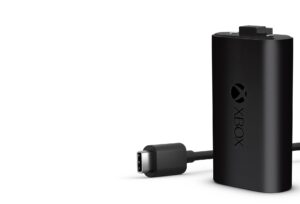Looking to revive your lithium-ion battery? We’ve got you covered! Reviving a lithium-ion battery is easier than you may think, and in this article, we will guide you through the process step by step. No need to worry about your battery losing its charge or becoming less efficient over time. With a few simple tips and tricks, you can bring your battery back to life and keep it performing at its best. So, let’s dive right in and learn how to revive a lithium-ion battery!
How to Revive a Lithium Ion Battery
Lithium-ion batteries are a popular power source in various electronic devices, from smartphones and laptops to electric vehicles. However, over time, these batteries can lose their capacity to hold a charge, leading to shorter battery life and reduced performance. If you’re experiencing these issues with your lithium-ion battery, don’t worry! In this article, we will explore various methods to revive a lithium-ion battery and extend its lifespan.
Understanding Lithium-ion Batteries
Before diving into the solutions, let’s first understand the basics of lithium-ion batteries. These batteries consist of multiple cells, each containing a positive electrode (cathode), negative electrode (anode), and an electrolyte. The movement of lithium ions between these electrodes during charging and discharging is what enables the battery to store and deliver electrical energy.
Over time, several factors contribute to the degradation of lithium-ion batteries:
- Heat: Exposure to high temperatures accelerates the aging process of lithium-ion batteries.
- Overcharging or Deep Discharging: Both scenarios can lead to irreversible damage and reduce battery capacity.
- Age: Lithium-ion batteries naturally degrade over time due to chemical reactions within the cells.
- Usage Patterns: Frequent full discharge and recharge cycles can impact the battery’s lifespan.
Now that we understand the factors behind battery degradation, let’s explore different methods to revive your lithium-ion battery.
1. Cool Down the Battery
Heat is one of the main culprits behind lithium-ion battery degradation. If you’ve been using your device intensively or exposing it to high temperatures, allow the battery to cool down before attempting any revival methods. Turn off the device and let it sit in a cool environment for at least an hour. Cooling down the battery can help restore some of its lost capacity.
2. Charge and Discharge
One common method to revive a lithium-ion battery is to perform a series of charge and discharge cycles. This process helps recalibrate the battery’s internal circuitry and can potentially restore lost capacity. Here’s how you can do it:
- Charge the battery: Plug your device into a charger and let it charge to 100%. Avoid interrupting the charging process.
- Discharge the battery: Use your device normally until it completely drains and powers off.
- Repeat: Repeat steps 1 and 2 for at least three to four cycles, allowing the battery to charge fully and discharge completely each time.
Performing charge and discharge cycles occasionally can help maintain the health of your lithium-ion battery and potentially revive it if it has lost some capacity.
3. Store the Battery Properly
If you’re not using your device for an extended period, it’s essential to store the battery correctly to prevent degradation. Follow these guidelines to preserve the battery’s health:
- Charge the battery to around 50%: A fully discharged or fully charged battery is more susceptible to degradation during storage.
- Turn off the device: Ensure that the device is powered off to minimize any background battery usage.
- Store in a cool, dry place: Avoid exposing the battery to extreme temperatures or high humidity.
- Store at a moderate charge level: If storing for an extended period, aim to keep the battery around 40-60% charge.
Properly storing your lithium-ion battery when not in use can slow down its natural degradation process and help maintain its overall capacity.
4. Update Firmware and Software
Sometimes, battery performance issues can be resolved by updating the firmware or software of your device. Manufacturers often release updates that optimize power usage and improve battery life. Check for any available updates for your device’s operating system, firmware, or battery management software. Keeping your device up to date can potentially improve the overall performance and longevity of your lithium-ion battery.
5. Avoid Extreme Temperatures
Exposing lithium-ion batteries to extreme temperatures, both hot and cold, can accelerate their degradation. To ensure optimal battery health:
- Avoid leaving your device in a hot car or direct sunlight.
- Don’t expose your device to extreme cold temperatures, such as leaving it outside during winter.
- If your device feels excessively hot during use, give it a break and let it cool down.
By protecting your lithium-ion battery from extreme temperatures, you can help extend its lifespan and prevent premature capacity loss.
6. Replace the Battery
If you’ve tried the above methods and your lithium-ion battery still doesn’t hold a charge or performs poorly, it might be time to consider replacing the battery. Lithium-ion batteries have a limited lifespan, typically lasting between 2-3 years, depending on usage and other factors. Contact the manufacturer or an authorized service center to inquire about battery replacement options for your specific device.
Reviving a lithium-ion battery requires a combination of proper care, maintenance, and following specific charging and discharging techniques. By cooling down the battery, performing charge and discharge cycles, storing the battery correctly, updating firmware and software, avoiding extreme temperatures, and considering a battery replacement when necessary, you can maximize the lifespan and performance of your lithium-ion battery.
Remember, taking proactive steps to maintain your battery’s health from the beginning can significantly prolong its overall lifespan. With these methods and best practices in mind, you can get the most out of your lithium-ion battery and ensure optimal performance for your electronic devices.
Frequently Asked Questions
How can I revive a lithium-ion battery?
To revive a lithium-ion battery, follow these steps:
Can I revive a completely dead lithium-ion battery?
No, it is not possible to revive a completely dead lithium-ion battery. If the battery voltage drops below a certain threshold, it may be permanently damaged and cannot be revived.
What should I do if my lithium-ion battery won’t hold a charge?
If your lithium-ion battery won’t hold a charge, try the following steps:
Is it safe to use third-party apps or methods to revive a lithium-ion battery?
It is not recommended to use third-party apps or methods to revive a lithium-ion battery. These methods may not be reliable or safe, and they can potentially damage the battery or the device it powers. It’s always best to follow the manufacturer’s guidelines or seek professional assistance.
How often should I perform battery maintenance to ensure its longevity?
Performing battery maintenance regularly can help prolong the lifespan of a lithium-ion battery. Here are some recommended practices:
Can I revive a swollen lithium-ion battery?
No, a swollen lithium-ion battery should not be revived or used. Swelling indicates possible internal damage or malfunction, and using such a battery can be dangerous. It is important to safely dispose of swollen batteries following proper guidelines.
Final Thoughts
If you’re looking to revive a lithium-ion battery, there are a few steps you can take to potentially bring it back to life. First, discharge the battery completely by using it until it shuts off. Then, connect it to a charger and let it charge fully. If this doesn’t work, try using a specialized battery charger or a battery recovery device. It’s also important to remember that not all lithium-ion batteries can be revived, especially if they have been damaged or have reached the end of their lifespan. However, these steps may help in certain cases, so it’s worth a try if you’re looking to revive a lithium-ion battery.


